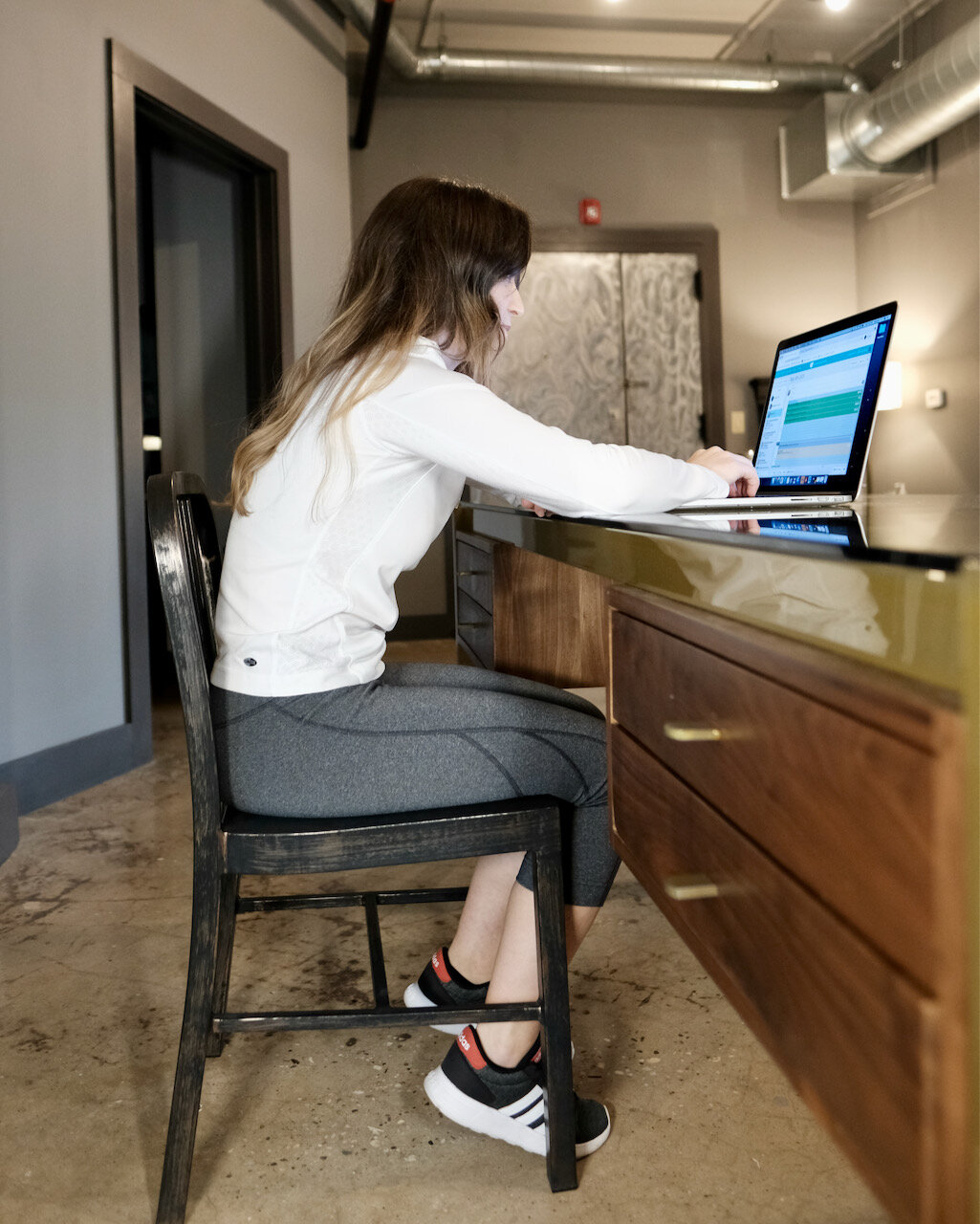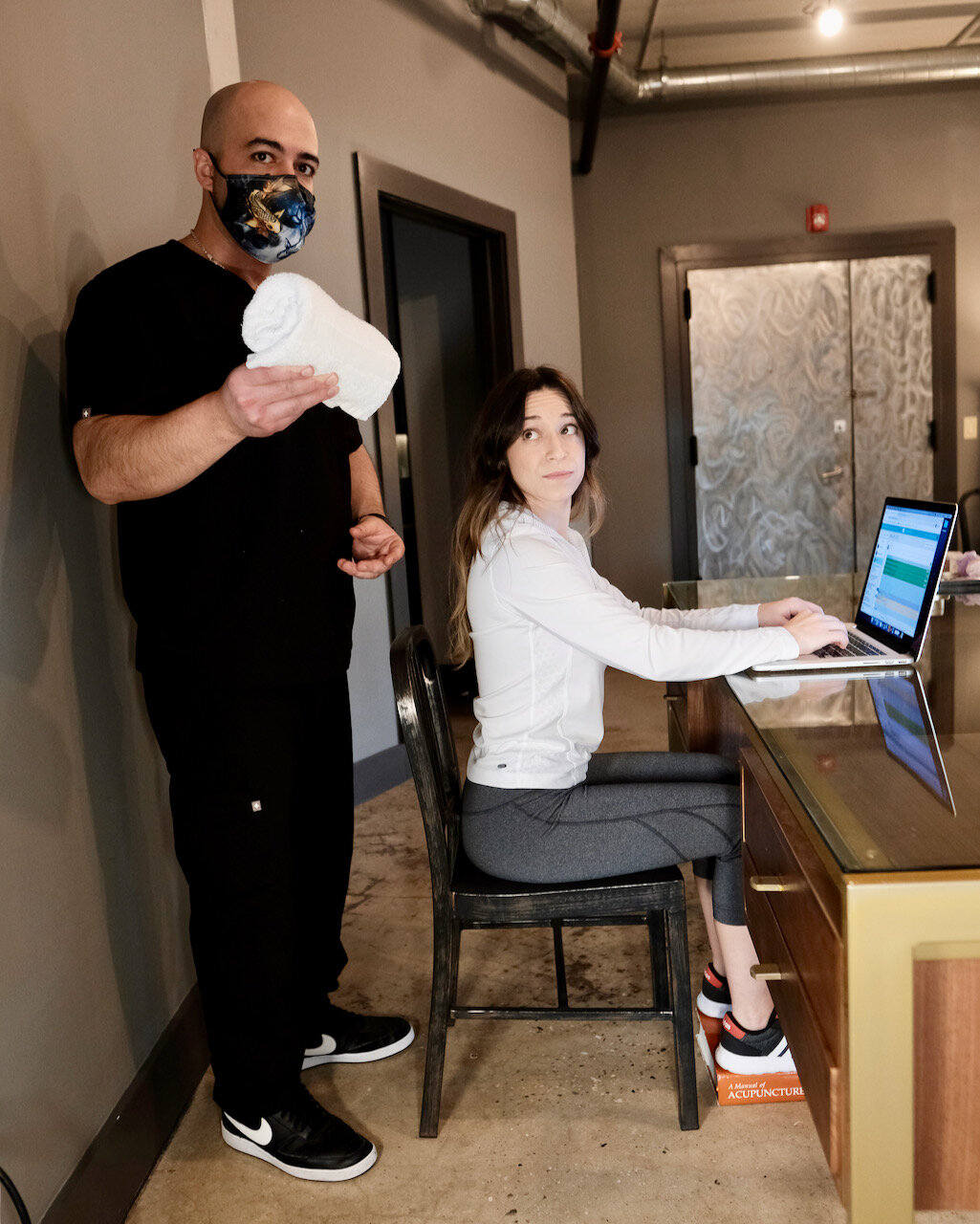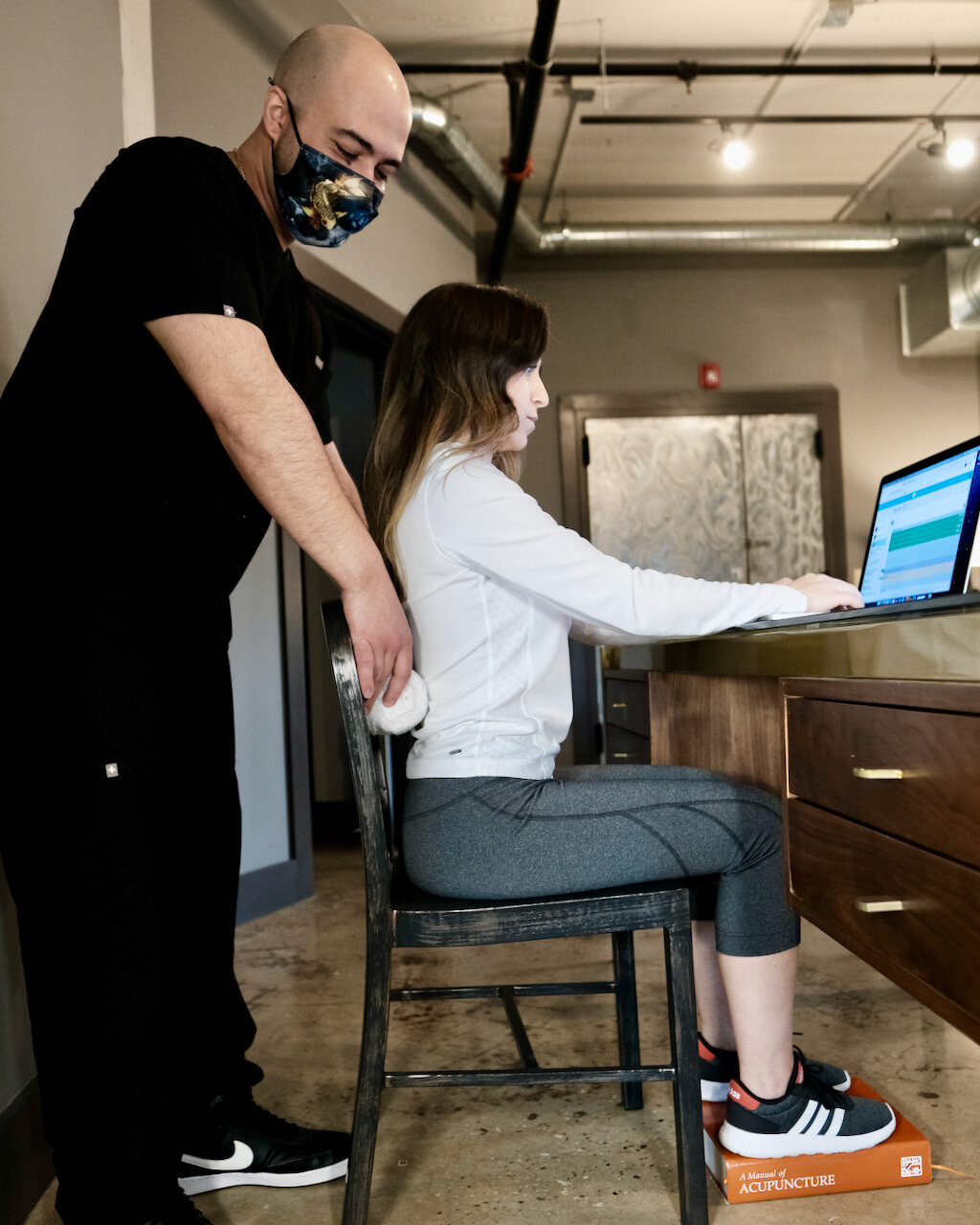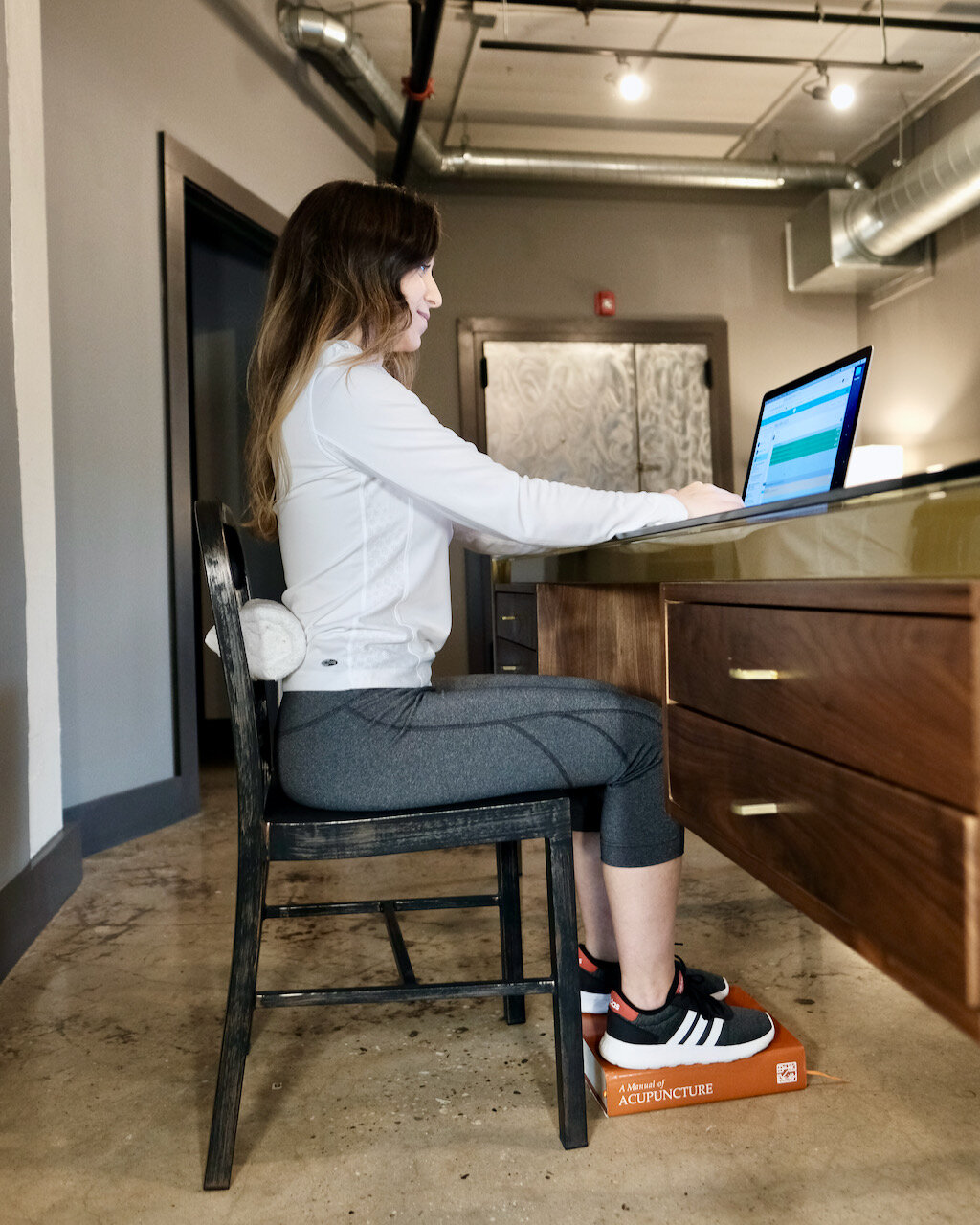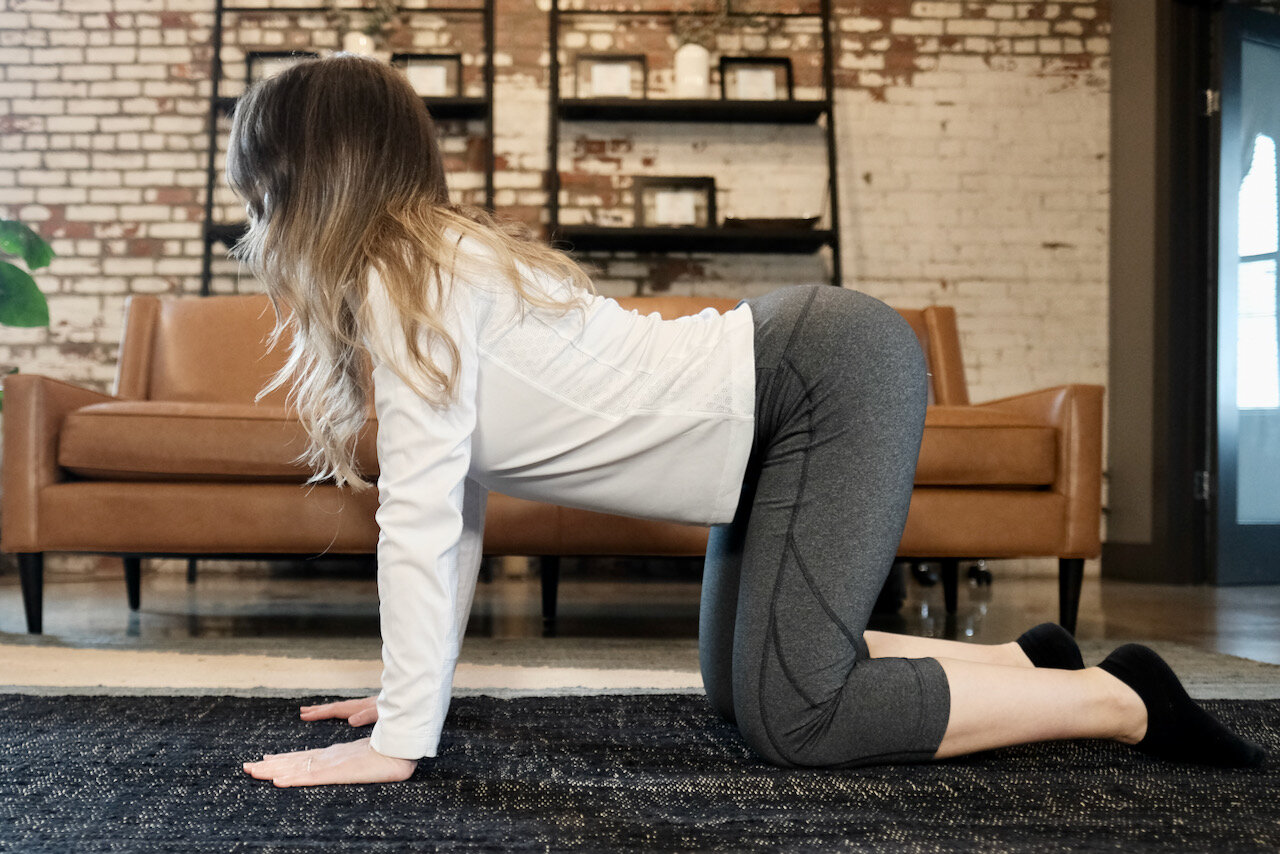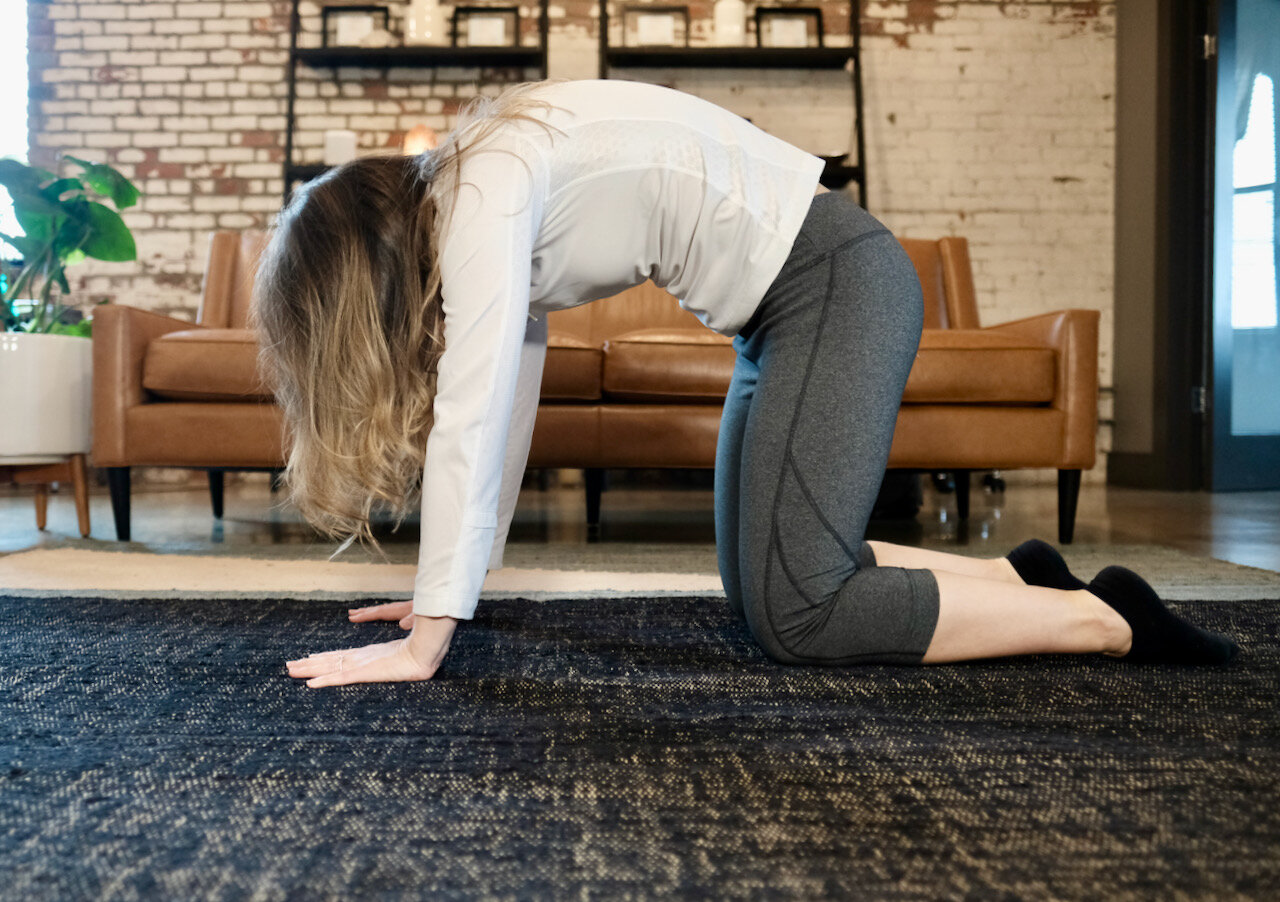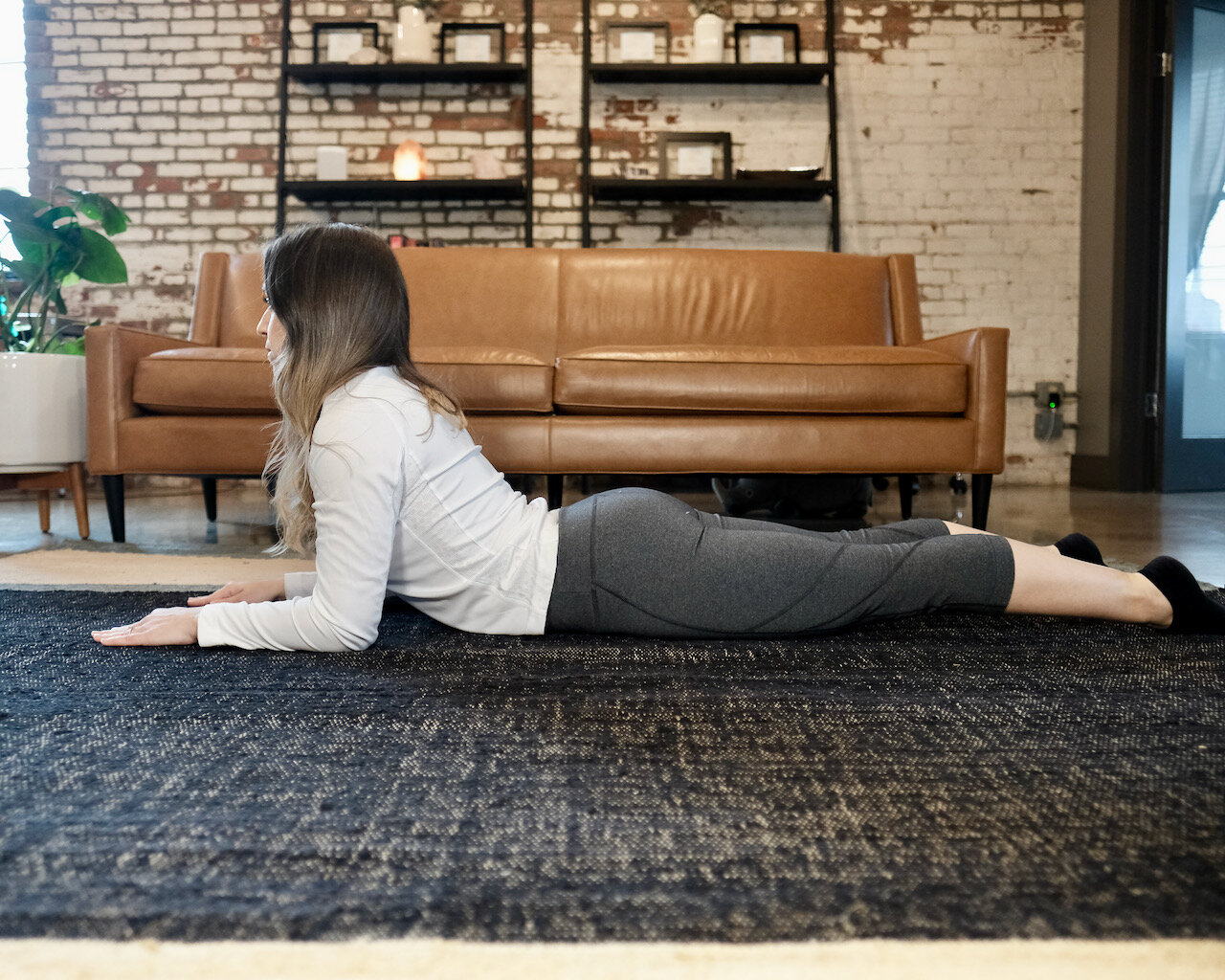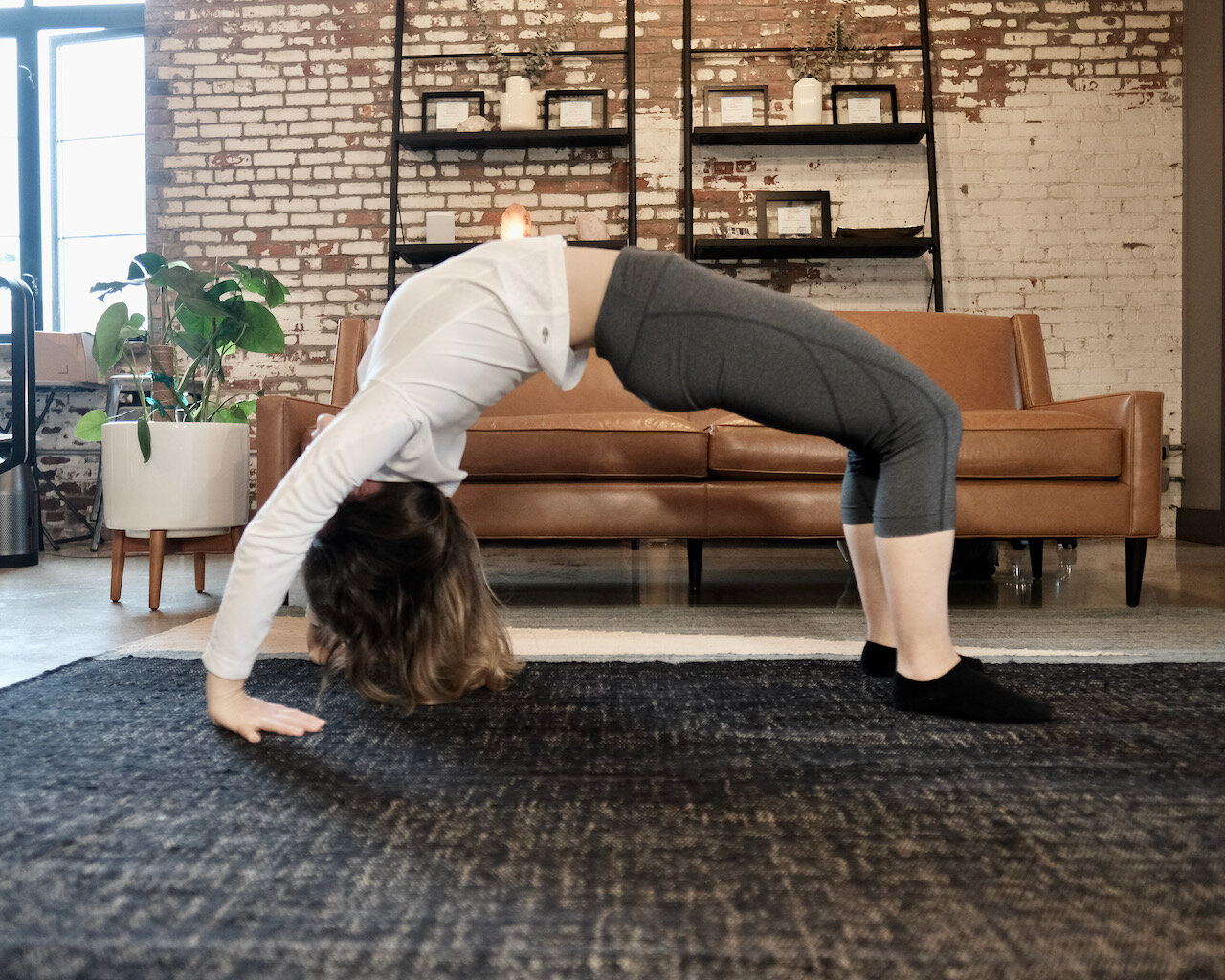Low Back Pain and Working From Home
Causes, Prevention, and Treatment
By the Acuworx Team
Since the beginning of the Pandemic, many have transitioned to working from home. We’re taking Zoom calls from kitchen chairs and living room sofas for hours on end. This drastic change in the work environment has unsurprisingly led to an increase in new or worsened lower back pain.
Lower back pain was already the leading cause of disability prior to COVID-19 and seems to be on the rise. There are several reasons for the uptick in cases - especially in individuals working from home. Once we discuss the causes, I’ll share with you my solutions to reduce, eliminate, and prevent lower back pain while working from home.
Not all chairs are created equal.
Many workplaces have ergonomic chairs and employees are not required to sit for long periods of time. While it’s important to have a comfortable chair, avoid using soft areas like a sofa or bed when working from home. These surfaces are not supportive for long durations and contribute to poor posture.
To improve posture while seated, follow the 90-90-90 rule. To assume this position, place feet firmly on the floor with the ankles at 90 degrees. If unable to lower the chair, place your feet on a stack of books or step stool. This position takes pressure off the lower back and decreases the chance of developing deep vein thrombosis. Next, make sure knees are equally bent 90 degrees. Finally, ensure the lumbar spine (lower back) is at its natural curve by sitting up at 90 degrees.
A supportive chair won’t help if we’re slumped over like a turtle shell. To maximize support, sit back comfortably in your chair and ensure you have the correct amount of lumbar support. If the chair lacks support, simply roll up a towel and place it in the small of your back. Sit back and adjust the towel to your comfort.
MOVE!
Working from home significantly decreases our daily movement. We minimize or eliminate activities such as taking the stairs, walking to and from cars or mass transit, and going out on lunch breaks. One idea to break the cycle of sitting is by setting a timer or reminder in your calendar. At least once per hour the timer will remind you to get up, stretch, and take a quick movement break.
Incorporating stretching during breaks is highly beneficial. Since we are seated in a forward-flexed position most of the day, I recommend extension based stretches. Extension is the Yang to Flexion’s Yin - it’s all about balance! Extension based stretches include simple yoga poses such as cat/cow pose and cobra pose. Advanced Yogi’s can try the bridge pose.
Reduce stress to reduce pain
You may find yourself with increasing back pain despite keeping busy and trying to maintain correct posture. This type of pain may be caused and made worse by stress. Stress manifests as tension in the body, both physically and psychologically. Try managing stress at home with meditation or breathwork. I recommend the 4-7-8 method. It has worked great for me and is scientifically proven to help lower stress levels. Learn more about the 4-7-8 method here.
Acupuncture works!
Lastly, regular acupuncture can help with both the physical and psychological components that leads to tension-type back pain. Through thorough and careful examination, an acupuncturist can determine the root cause of pain. We then address the physical symptoms of tight, sore muscles as well as any mental and emotional stress. Evidence-based studies show that acupuncture puts the body into parasympathetic, or “relaxation” mode, and keeps it there.
If you are new to acupuncture or would like to learn more about how we can help, send us your questions at info.acuworx@gmail.com and follow us on Instagram @acuworx.



